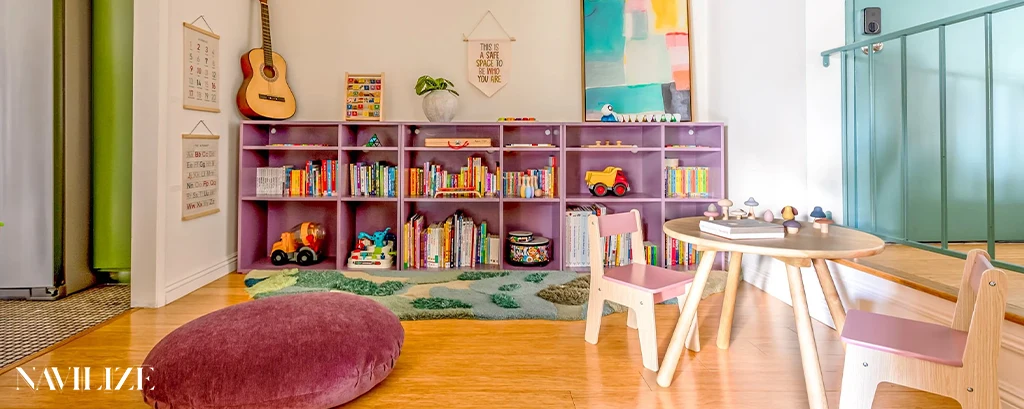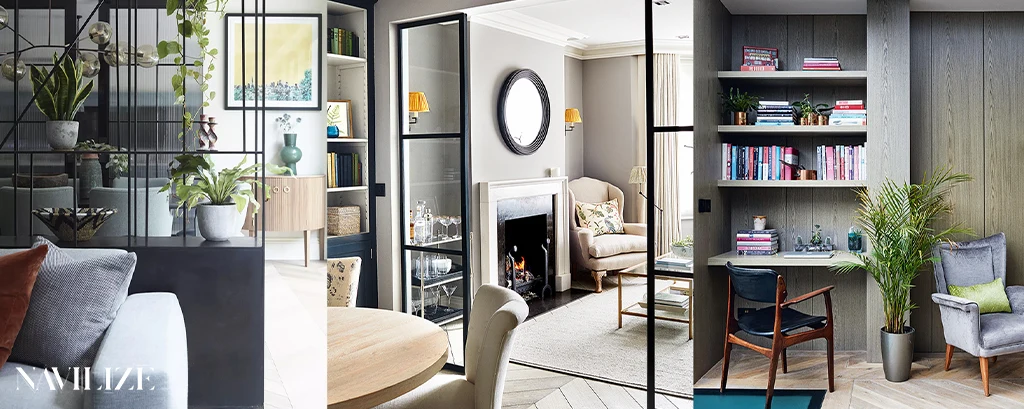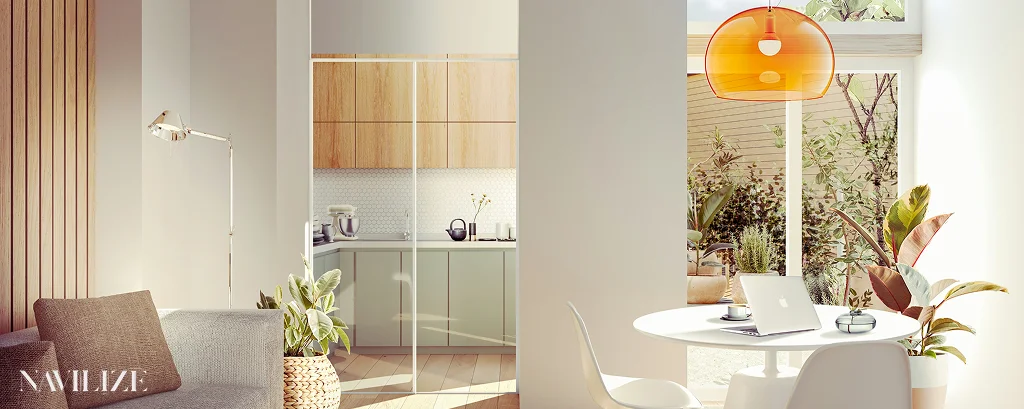| Strategy | Why It Saves Money |
|---|---|
| Keep Existing Furniture | Reduces costs by refinishing or repurposing items for a refreshed look. |
| Refurbish Instead of Replace | Repaints or restores cabinets, flooring, or tiles, avoiding expensive replacements. |
| Choose Affordable Alternatives | Uses cost-effective materials like laminates or engineered surfaces that mimic luxury. |
| Maintain the Existing Layout | Avoids costly structural, plumbing, or electrical changes by working within the current footprint. |
| Shop Pre-Owned or Overstocks | Finds quality surplus or discontinued materials at lower prices, adding character. |
| Minimize Customization | Opts for standard sizes and prefabricated solutions to reduce labor and material costs. |
| Avoid Last-Minute Design Changes | Prevents wasted materials and labor by finalizing decisions early. |
| Do Some Work Yourself (Safely) | Saves on labor for simple tasks like painting or cleanup, leaving complex work to professionals. |
| Ask Contractor for Budget Ideas | Leverages professional insights for affordable materials and efficient methods. |
| Plan Ahead to Avoid Pitfalls | Anticipates hidden costs, permits, and inspections to maintain financial control. |
Remodeling a house on a budget requires a balance of creativity and strategy. Many homeowners believe limited funds restrict quality, but thoughtful planning proves otherwise. By prioritizing essential upgrades, reusing existing features, and sourcing practical materials, you can achieve impressive results without overspending. Careful scheduling, realistic goals, and flexibility are vital for keeping projects on track. Budget remodeling also inspires innovative solutions, as constraints encourage resourceful design choices. With the right mindset, even modest investments can lead to meaningful improvements in comfort, style, and functionality.
Budget-Friendly Home Remodeling: A Step-by-Step Guide
A structured process is key to budget-friendly remodeling. Begin by identifying the most urgent needs and distinguishing them from optional upgrades. Create a clear plan that outlines goals, timelines, and essential materials. Always allow room for unexpected adjustments, as hidden issues often appear once construction begins. Trusted home renovation resources provide guidance for anticipating costs such as permits, inspections, and utility changes. Following a step-by-step guide ensures control over the process, helps reduce unnecessary spending, and keeps the renovation aligned with your vision and financial boundaries.
How to Set a Realistic Remodeling Budget
A realistic remodeling budget goes beyond estimating surface-level expenses. It must account for design fees, approvals, and potential structural surprises. The most effective approach is to gather professional opinions, compare market averages, and plan for flexibility. Using insights from Remodeling allows homeowners to understand typical ranges for different project categories. A thoughtful budget always includes space for unforeseen challenges, ensuring stability throughout the process. Balancing affordability with long-term benefits helps you create a home that is not only beautiful but also financially sustainable.
Typical Costs for Different Project Types
Different types of remodeling projects vary in complexity, scope, and required expertise. A smaller interior update may involve primarily cosmetic work, while a full kitchen transformation demands more planning, labor, and specialized materials. Expansions or conversions add even greater complexity due to structural changes and utility adjustments. Regional factors, contractor expertise, and design choices also influence the overall expense. Understanding the general differences between project types helps homeowners prioritize wisely. When expectations align with reality, the risk of overspending or cutting corners is significantly reduced.
Planning Ahead to Avoid Budget Pitfalls
Effective planning is one of the most powerful tools for staying within budget. Many financial setbacks arise when homeowners underestimate hidden costs or overlook essential approvals. Start with a clear scope of work and prepare backup options in case materials are unavailable. Factor in the time and fees needed for inspections or potential code upgrades. Anticipating disruptions allows smoother scheduling and avoids last-minute expenses. By thinking ahead and preparing for both predictable and unpredictable challenges, homeowners gain peace of mind and greater financial control during remodeling.

Cost-Saving Strategies That Actually Work
Saving money during remodeling is less about cutting quality and more about making intentional choices. Reusing materials, selecting durable yet affordable alternatives, and keeping layouts intact can make a big difference. Working with professionals also uncovers creative solutions that maintain high standards while reducing unnecessary spending. Avoiding last-minute changes and investing in proper preparation prevent costly mistakes. True budget success lies in optimizing value, not simply choosing the cheapest option. A well-thought-out approach ensures your home improvement project is both cost-effective and long-lasting.
Keep Existing Furniture
Keeping existing furniture helps reduce expenses while adding a sense of continuity to the remodeled space. Instead of discarding older pieces, consider refinishing, reupholstering, or updating hardware to create a refreshed look. Repurposed items often blend seamlessly with new elements, providing both style and function. This approach also supports sustainability by reducing waste. In many cases, incorporating well-loved furniture alongside new finishes creates a balanced, personalized atmosphere. Simple adjustments can transform familiar items, helping homeowners stretch their budgets without compromising design quality.
Refurbish Instead of Replace
Refurbishing is a cost-effective alternative to full replacement. Cabinets can be repainted or refinished, flooring can be restored, and tiles can be reglazed to achieve a modern appearance without the expense of buying new. This method reduces waste, shortens timelines, and preserves the character of existing elements. Homeowners often find that strategic refurbishing delivers surprisingly fresh results. By focusing on renewal rather than replacement, it’s possible to maintain quality, minimize disruption, and enjoy a stylish transformation while staying comfortably within budget limits.
Choose Affordable Alternatives
Affordable alternatives provide the opportunity to achieve a high-end look without excessive costs. Modern materials often replicate the appearance of luxury finishes while offering durability and practicality. For example, engineered surfaces can mimic natural stone, and high-quality laminates can resemble hardwood. Prefabricated cabinetry and fixtures are also strong contenders for balancing cost and style. The goal is not to sacrifice aesthetics but to make thoughtful selections that combine visual appeal with financial efficiency. These smart substitutions allow homeowners to achieve beautiful spaces at manageable costs.

Maintain the Existing Layout
Maintaining the current layout is one of the most effective ways to keep remodeling affordable. Altering structural walls, plumbing, or electrical systems significantly increases complexity. By working within the existing footprint, homeowners can focus resources on finishes and upgrades that deliver immediate impact. Updating lighting, storage, or surface materials offers fresh functionality without the added expense of major reconfiguration. This approach also shortens project timelines and avoids complications with building codes. Respecting the original layout ensures both efficiency and financial stability throughout the remodeling journey.
Shop Pre-Owned or Overstocks
Shopping for pre-owned items or overstock materials is a smart way to lower expenses while maintaining quality. Many suppliers offer surplus products or discontinued lines at reduced prices, providing access to excellent materials without premium costs. Salvage stores and online marketplaces can yield unique finds that add character to the home. With careful selection and proper installation, these items perform just as well as new products. This approach not only saves money but also contributes to sustainable building practices by reducing unnecessary production and waste.
Minimize Customization
Customization often drives up remodeling expenses due to specialized labor and materials. Opting for standard sizes, prefabricated solutions, and readily available products helps control costs while ensuring durability. For instance, stock cabinetry or off-the-shelf fixtures can achieve a polished look at a fraction of the effort. Reserving customization for a few standout features ensures balance between individuality and affordability. By minimizing bespoke elements, homeowners maintain flexibility, shorten lead times, and reduce financial strain without sacrificing style or function in their remodeled spaces.
Avoid Last-Minute Design Changes
Last-minute design changes are among the most common causes of budget overruns. Adjusting layouts or materials once construction is underway often results in wasted time, discarded supplies, and additional labor. To avoid this, finalize decisions early and stick to them. Thorough planning with designers or contractors ensures that selections are both practical and visually satisfying. Establishing discipline in the decision-making process minimizes disruptions and helps keep the project aligned with both financial and scheduling goals. Consistency ensures smoother progress and greater satisfaction at completion.

Do Some of the Work Yourself (Safely)
Taking on manageable tasks personally can reduce costs without compromising quality. Homeowners may safely handle preparation work such as painting, basic demolition, or simple installations. However, specialized tasks involving electrical, plumbing, or structural changes should remain in professional hands to avoid safety risks and expensive mistakes. By contributing selectively, you can add value while ensuring critical areas are left to experts. Even small efforts, such as cleanup or assembling furniture, provide savings and create a sense of personal involvement in the remodel.
Ask Your Contractor for Budget Ideas
Contractors often know cost-saving strategies that homeowners may overlook. By discussing your financial boundaries openly, you invite suggestions for affordable materials, efficient construction methods, or phased project planning. Experienced professionals can recommend suppliers with competitive pricing or identify areas where minor adjustments significantly reduce expenses. This collaboration ensures that your remodel achieves both style and affordability. Asking contractors for input transforms them from service providers into strategic partners, aligning the project with your goals while maintaining high standards of craftsmanship and design.
Remodeling on a Budget? Navilize Has You Covered in San Diego
Navilize offers expert support for homeowners seeking stylish remodeling solutions without overspending. Their team of architects, designers, and project managers specializes in budget-friendly strategies that preserve both quality and aesthetics. By emphasizing sustainable materials, efficient layouts, and local expertise, they ensure every project is practical, durable, and aligned with financial goals. In San Diego, where regional costs and regulations can complicate projects, Navilize provides reliable guidance and clear planning. With their comprehensive approach, homeowners achieve renovations that are cost-conscious, beautiful, and built to last.






